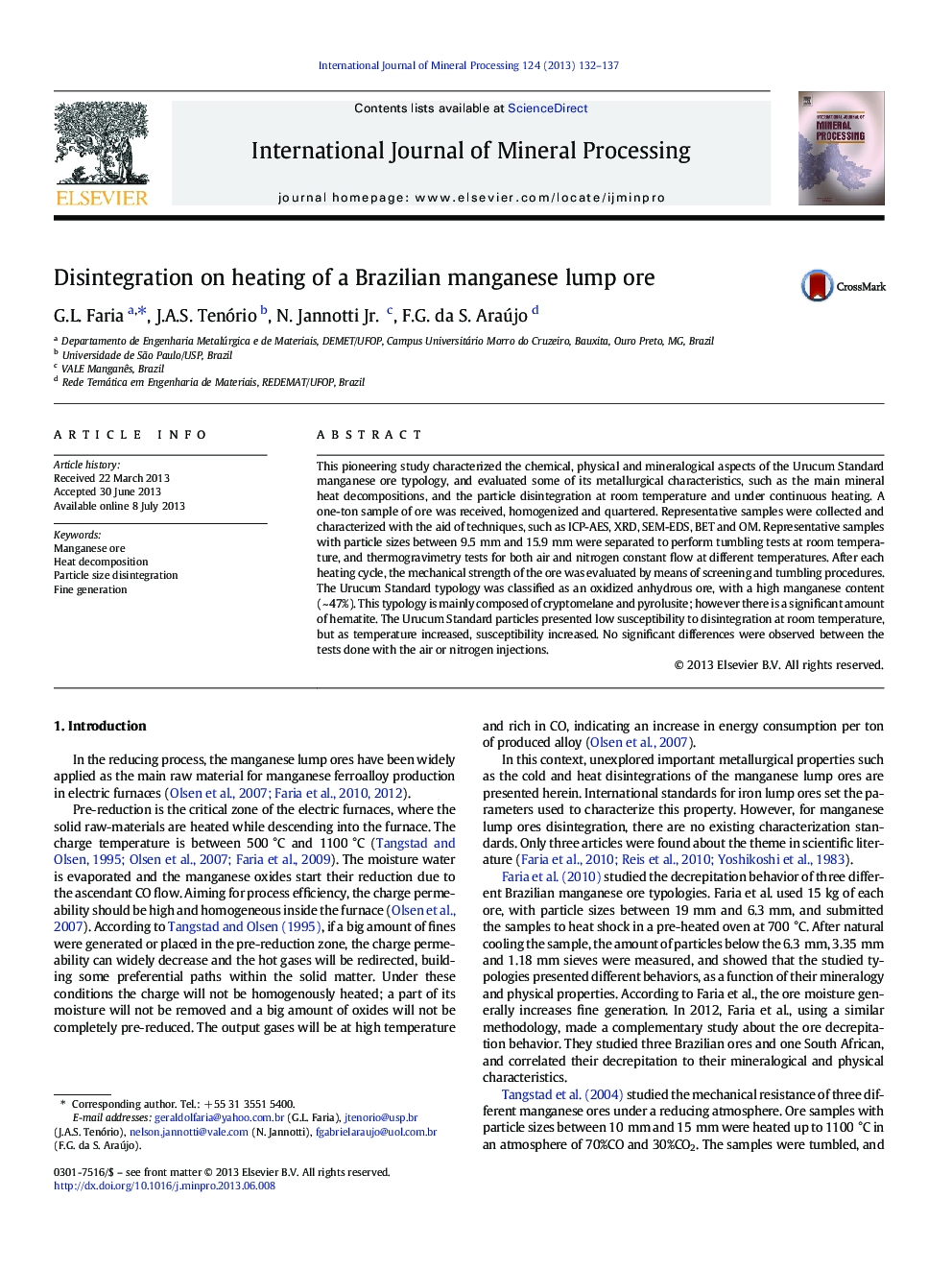| Article ID | Journal | Published Year | Pages | File Type |
|---|---|---|---|---|
| 214061 | International Journal of Mineral Processing | 2013 | 6 Pages |
•Pioneer study about the ore disintegration of an important manganese lump ore.•First experimental methodology that characterizes the manganese ore disintegration.•Complete characterization of a strategic Brazilian manganese lump ore.•Correlation between physical and mineralogical aspects to the ore disintegration.•Influences of heat decomposition on the particle disintegration phenomena.
This pioneering study characterized the chemical, physical and mineralogical aspects of the Urucum Standard manganese ore typology, and evaluated some of its metallurgical characteristics, such as the main mineral heat decompositions, and the particle disintegration at room temperature and under continuous heating. A one-ton sample of ore was received, homogenized and quartered. Representative samples were collected and characterized with the aid of techniques, such as ICP-AES, XRD, SEM-EDS, BET and OM. Representative samples with particle sizes between 9.5 mm and 15.9 mm were separated to perform tumbling tests at room temperature, and thermogravimetry tests for both air and nitrogen constant flow at different temperatures. After each heating cycle, the mechanical strength of the ore was evaluated by means of screening and tumbling procedures. The Urucum Standard typology was classified as an oxidized anhydrous ore, with a high manganese content (~ 47%). This typology is mainly composed of cryptomelane and pyrolusite; however there is a significant amount of hematite. The Urucum Standard particles presented low susceptibility to disintegration at room temperature, but as temperature increased, susceptibility increased. No significant differences were observed between the tests done with the air or nitrogen injections.
